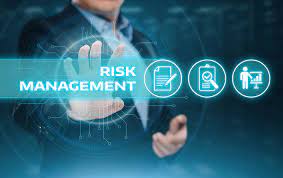Compliance and risk management have become essential components of guaranteeing a company’s viability, growth, and reputation in today’s dynamic business scene. Companies are continuously adapting to a slew of rules, confronted with a slew of hazards, and navigating an ever-changing industry. This article explores the intricate connection between compliance and Business Risk Management and how they play a pivotal role in modern business operations.
Compliance, the adherence to rules and regulations, is essential for any business to function effectively. It encompasses a range of industry-specific regulations and regional/global laws. Risk management, on the other hand, is detecting, assessing, and managing risks that may impact a company’s operations.
The Significance of Compliance in Business
Compliance is not just about ticking boxes; it’s about maintaining an ethical and responsible business image. It instills trust among stakeholders and customers, ensuring that the company operates within legal boundaries. Violating compliance regulations can lead to severe consequences, including legal actions and reputational damage.
Understanding Business Risk Management
Business Risk Management, as the name suggests, is all about managing and mitigating risks. These risks can be financial, operational, strategic, or related to reputation. Effective risk management is vital for a company’s longevity.
The Interplay Between Compliance and Risk Management
The connection between compliance and risk management lies in their shared goal of preventing adverse consequences. While compliance ensures that a company adheres to relevant regulations, risk management identifies potential threats and seeks to reduce their impact. They work hand in hand to secure a company’s future.
Common Compliance Regulations
Industry-Specific Regulations
Different industries have distinct compliance requirements. For example, healthcare has HIPAA, and finance has Sarbanes-Oxley. Understanding industry-specific regulations is crucial.
Regional and Global Regulations
Companies often operate globally and must comply with various regional and global regulations. GDPR, for instance, affects any business handling European citizens’ data.
The Role of Technology in Compliance and Risk Management
Technology plays a significant role in automating compliance and risk management processes. Software solutions help in tracking, reporting, and analyzing data, ensuring companies stay compliant and prepared.
Benefits of Integrating Compliance and Risk Management
Integrating compliance and risk management offers several advantages, including enhanced operational efficiency, better decision-making, and reduced operational and financial risks.
Challenges in Compliance and Risk Management
The complexities of compliance and risk management make it a daunting endeavor, as companies grapple with changing laws, cybersecurity issues, and the demand to embrace emerging technologies.
Key Strategies for Effective Compliance and Risk Management
To ensure a robust compliance and risk management system, businesses should adopt the following strategies:
Establishing Clear Policies and Procedures
Clear guidelines and policies help employees understand what is expected of them.
Continuous Monitoring and Reporting
Regular monitoring and reporting ensure that deviations are detected and addressed promptly.
Employee Training and Awareness
Employee training is critical in ensuring that the compliance and risk management culture is ingrained within the organization.
Regular Auditing and Assessments
Periodic audits and assessments provide insights into the effectiveness of the compliance and risk management program.
Leveraging Technology Solutions
Utilizing cutting-edge technology can streamline and enhance compliance and risk management processes.
Real-Life Examples of Compliance and Risk Management
This section will feature real-life case studies of companies that successfully navigated the challenges of compliance and risk management, showcasing best practices and lessons learned.
The Impact on Business Growth
Companies that effectively combine compliance and risk management tend to experience sustainable growth, as they are better prepared to handle disruptions and challenges.
Case Studies
This section will delve deeper into specific case studies of businesses that faced compliance and risk management issues and how they resolved them, illustrating the tangible benefits.
Conclusion
The connection between compliance and risk management is undeniably crucial for a company’s sustained success, ensuring ethical operations, legal adherence, and a robust risk mitigation plan. This fusion of compliance and risk management will continue to be a fundamental pillar of sound corporate governance, adapting to evolving business environments.
 HammBurg Be informed with latest news, reviews, entertainment, lifestyle tips, and much more.
HammBurg Be informed with latest news, reviews, entertainment, lifestyle tips, and much more.




